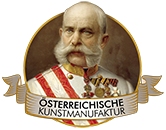A faint scratching sound fills the workshop as Francesco Villamena expertly works the copper plate. Engraving, his preferred medium, demands patience and precision—qualities Villamena embodied with distinction. In late 16th- and early 17th-century Italy, a period of artistic transformation, he emerged as one of the most sought-after engravers of his generation. His works are characterized by remarkable clarity of line and subtle gradations of light and shadow, lending his scenes an almost sculptural plasticity. Villamena mastered the full potential of copper engraving: the depth of shadows, the brilliance of highlights, and the precision of detail blend seamlessly in his prints to create a harmonious overall effect.
Villamena's subjects range from religious scenes and portraits to allegorical compositions. Particularly striking is his sense of composition and space, likely developed through engagement with the works of masters such as Agostino Carracci and Cornelis Cort. The materiality of copper and the technique of engraving not only shaped the aesthetics of his art but also its impact: fine lines and nuanced hatching create a depth that draws the viewer directly into the scene. Villamena's influence extended far beyond his own workshop; as a teacher and publisher, he shaped an entire generation of engravers and played a key role in the dissemination of Italian copper engraving. His prints, now housed in numerous museums and collections, testify to his exceptional mastery of material and technique, establishing him as a pivotal figure in Baroque Italian printmaking.
×




.jpg)
.jpg)
.jpg)
.jpg)
.jpg)
.jpg)
La_-_(MeisterDrucke-1362070).jpg)
La_-_(MeisterDrucke-1362070).jpg)
.jpg)
.jpg)
.jpg)
.jpg)
.jpg)
.jpg)
.jpg)
.jpg)
.jpg)
.jpg)
.jpg)
.jpg)
.jpg)
.jpg)
.jpg)
.jpg)
.jpg)
.jpg)
.jpg)
.jpg)
.jpg)
.jpg)
.jpg)
.jpg)
.jpg)
.jpg)
.jpg)
.jpg)
.jpg)
.jpg)
.jpg)
.jpg)
.jpg)
.jpg)
.jpg)
.jpg)
.jpg)
.jpg)
.jpg)
.jpg)
.jpg)
.jpg)
_c1656_(engraving)_-_(MeisterDrucke-1507028).jpg)
_c1656_(engraving)_-_(MeisterDrucke-1507028).jpg)
_-_(MeisterDrucke-1348022).jpg)
_-_(MeisterDrucke-1348022).jpg)
.jpg)
.jpg)
.jpg)
.jpg)
.jpg)
.jpg)
_-_(MeisterDrucke-1080968).jpg)
_-_(MeisterDrucke-1080968).jpg)
.jpg)
.jpg)
.jpg)
.jpg)
.jpg)
.jpg)
.jpg)
.jpg)
.jpg)
.jpg)
.jpg)
.jpg)






